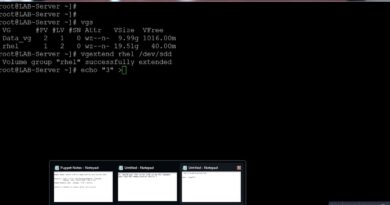install pip on linux centos
Download this code from https://codegive.com
Sure, I’d be happy to help you with that. Installing pip on CentOS involves a few steps, and I’ll guide you through the process. Pip is a package management system for Python that simplifies the process of installing and managing Python libraries.
Step 1: Update System Packages
Before installing pip, it’s a good idea to update your system packages to ensure you have the latest information about available packages. Open a terminal and run the following commands:
This will update your system’s package information.
Step 2: Install EPEL Repository
The Extra Packages for Enterprise Linux (EPEL) repository provides additional packages for CentOS. You can install it using the following command:
Step 3: Install Python and PIP
Next, you need to install Python. CentOS 7 and later versions come with Python installed, but if you are using an older version, you may need to install it. Additionally, you’ll need the python-pip package. Run the following command:
If you’re using an older version of CentOS, you may need to use python and python-pip instead.
Step 4: Verify the Installation
Once the installation is complete, you can verify that both Python and Pip are installed correctly by checking their versions:
This should display the installed Python and Pip versions.
Step 5: Update Pip (Optional)
It’s a good practice to upgrade pip to the latest version. You can do this with the following command:
This ensures that you have the latest version of pip with bug fixes and improvements.
Now you have successfully installed pip on your CentOS system. You can use pip to install Python packages and manage your Python environment. If you encounter any issues during the installation, make sure to check for error messages and consult the CentOS documentation or forums for assistance.
ChatGPT
centos 7



